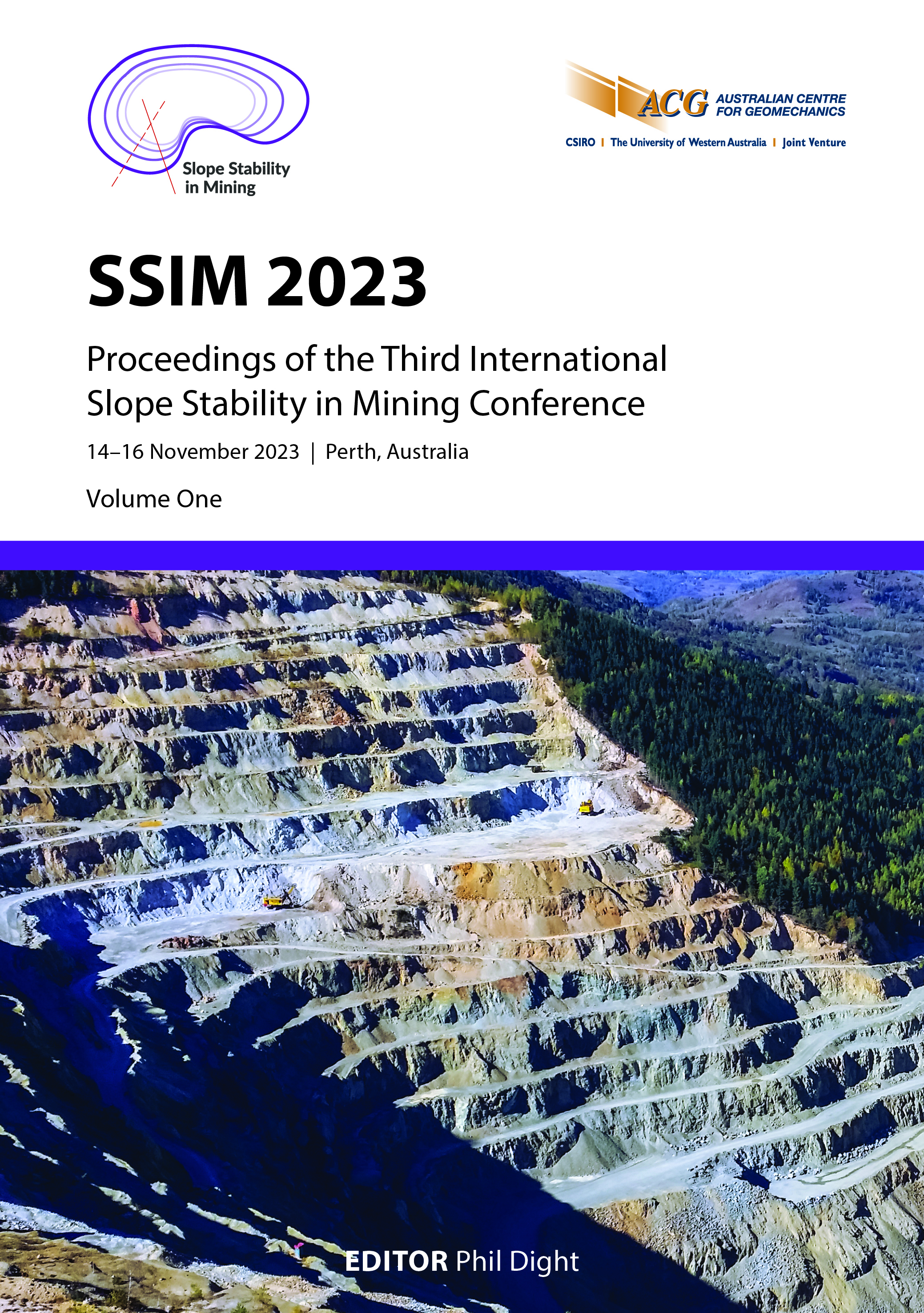A proactive approach to slope failure alarming by utilising velocity ratio as a parameter to deal with line-of-sight concerns for a Slope Stability Radar™

|
Authors: Putra, I; Yudono, A; Sari, FA; Cabrejo, A |
DOI https://doi.org/10.36487/ACG_repo/2335_57
Cite As:
Putra, I, Yudono, A, Sari, FA & Cabrejo, A 2023, 'A proactive approach to slope failure alarming by utilising velocity ratio as a parameter to deal with line-of-sight concerns for a Slope Stability Radar™', in PM Dight (ed.), SSIM 2023: Third International Slope Stability in Mining Conference, Australian Centre for Geomechanics, Perth, pp. 817-830, https://doi.org/10.36487/ACG_repo/2335_57
Abstract:
The Slope Stability Radar (SSR)™ is a popular tool for monitoring slopes in mining operations due to its ability to obtain sub-millimetre precision using the interferometry method. However, the effectiveness of the SSR also depends on its position with respect to the pit geometry and angle of incidence, as it only measures slope movement in the line-of-sight of the radar. The conventional alarm system based on deformation and velocity thresholds can be affected by geometry and angle of incidence, leading to alarms being triggered at different times, even in the same deformation area that is being monitored. In order to address this limitation, the authors propose utilising the velocity ratio (VR) to reduce the impact of vector losses and improve alarm accuracy. The VR is a dimensionless number resulting from the comparison of two movement rates, reference against the current, and estimates of how a wall is moving in the present versus in the past. For this study, the parameters of deformation, velocity, and VR were extracted from six sensor samples during the linear deformation phase. The statistical analysis revealed that the standard deviation of VR exhibited the lowest value compared to deformation and velocity. These findings highlight the advantages of employing VR alarms, as they simplify the determination of a single threshold value. This streamlined approach is particularly advantageous in cases where varying magnitudes of velocity are observed across different sections of a slope. On the contrary, utilising basic velocity analysis to achieve similar warning times across different slope sections would necessitate the use of varying thresholds, leading to increased complexity in alarm definition. This approach with VR has the potential to improve the site's geotechnical decision-making process, as it enables real-time monitoring of slope stability with greater accuracy and reduces the risk associated with the ‘unknowns’ related to catastrophic slope failures.
Keywords: open pit, Slope Stability Radar, line-of-sight, alarm, velocity ratio
References:
Noon, D, Reeves, B, Stickley, G & Longstaff, D 2001, ‘Slope stability radar for monitoring mine walls’, in C Nguyen (ed.), Proceedings of SPIE, vol. 4491, pp. 57–67.
Saunders, P, Nicoll, S & Christensen, C 2016, ‘Slope stability radar alarm threshold validation at Telfer gold mine’, in PM Dight (ed.), APSSIM 2016: Proceedings of the First Asia Pacific Slope Stability in Mining Conference, Australian Centre for Geomechanics, Perth, pp. 367–378,
Sharon, R & Eberhardt, E 2020, Guidelines for Slope Performance Monitoring, CSIRO Publishing, Melbourne, pp. 102–103.
GroundProbe 2021, MonitorIQ Desktop, version 2022.2.3, computer software, www.groundprobe.com/product/monitoriq-desktop/
GroundProbe 2019, Slope Stability Radar – Understanding SSR, pp. 25–28.
© Copyright 2026, Australian Centre for Geomechanics (ACG), The University of Western Australia. All rights reserved.
View copyright/legal information
Please direct any queries or error reports to repository-acg@uwa.edu.au
View copyright/legal information
Please direct any queries or error reports to repository-acg@uwa.edu.au

